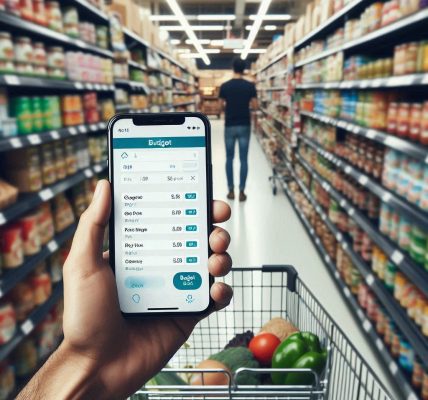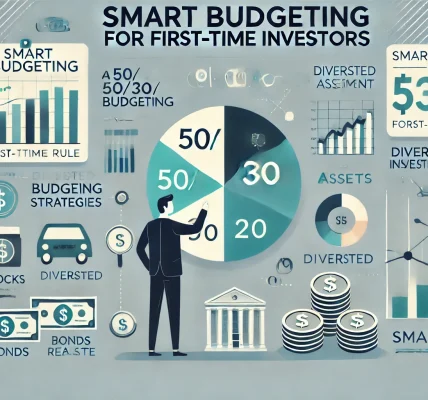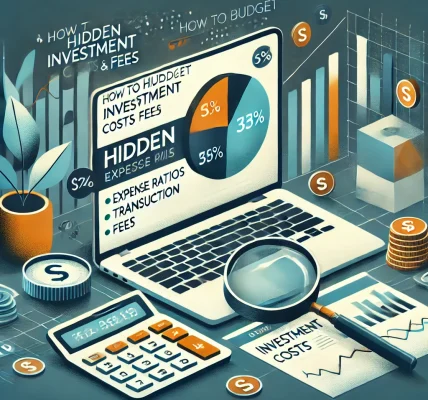📚 Introduction:
Managing money effectively requires discipline, and one of the oldest and most effective budgeting methods is the envelope budgeting system. Originally a cash-based approach, it involves allocating physical cash into labeled envelopes for different expense categories. Once the money in an envelope is exhausted, no more spending is allowed in that category.
In today’s digital age, where cashless payments, credit cards, and budgeting apps dominate, many wonder if the envelope budgeting system is still relevant. In this guide, we will explore the principles of envelope budgeting, how to adapt it for the digital era, its pros and cons, and whether it’s still a practical choice today.
🎯 What is the Envelope Budgeting System?
The envelope budgeting system involves assigning a specific amount of cash to different spending categories and placing the money in physical envelopes.
✅ How It Works:
- You label envelopes with budget categories (e.g., groceries, entertainment, utilities).
- Allocate a set amount of money into each envelope based on your budget.
- Spend only from the designated envelope.
- Once the money is gone, spending in that category stops.
✅ Example:
- Groceries: ₹5,000
- Entertainment: ₹2,000
- Utilities: ₹3,000
When ₹5,000 allocated for groceries is spent, you can’t spend more on groceries until the next budgeting cycle.
📈 Why Was the Envelope Budgeting System So Effective?
- Promotes Discipline:
Since you are physically limited to the cash in the envelope, you are forced to stick to the budget. - Prevents Overspending:
Once an envelope is empty, you can’t borrow from another envelope, ensuring no category overspending. - Increases Spending Awareness:
Seeing physical cash leave the envelope creates a tangible sense of expenditure, making you more mindful of spending habits. - Reduces Reliance on Credit:
Using cash discourages dependence on credit cards, reducing the likelihood of debt accumulation.
📊 Challenges of the Traditional Envelope System in the Digital Age
In today’s digital world, where most transactions happen online, carrying cash in envelopes seems impractical. Here’s why:
- Rise of Cashless Transactions:
Digital payments, UPI, and credit cards have replaced cash in most transactions. - Subscription-Based Services:
Automatic payments for streaming platforms, cloud storage, and other services don’t fit well into the cash-only system. - Online Shopping Boom:
A large portion of shopping happens online, making it impossible to use physical cash envelopes. - Security Concerns:
Carrying large amounts of cash in envelopes increases the risk of theft or misplacement.
💡 Adapting the Envelope Budgeting System for the Digital Age
Despite these challenges, the envelope budgeting system can be successfully adapted for the modern, digital world. Here’s how:
✅ 1. Use Virtual Envelopes with Budgeting Apps
Many digital budgeting apps replicate the envelope system by allowing you to categorize and allocate money for different expenses.
✅ Top Apps for Virtual Envelope Budgeting:
- Goodbudget: Emulates the traditional envelope system in a digital format.
- YNAB (You Need A Budget): Assigns every dollar to a category, similar to physical envelopes.
- Mvelopes: Specifically designed to apply envelope budgeting principles digitally.
🚨 Pro Tip:
Link your bank account with the app to automatically track and categorize expenses.
✅ 2. Create Sub-Accounts for Different Expenses
Most banks allow you to create multiple sub-accounts within a savings account. Allocate a portion of your income to these sub-accounts for different spending categories.
✅ Example:
- Groceries: ₹5,000 in a dedicated sub-account.
- Entertainment: ₹2,000 in another sub-account.
🚨 Pro Tip:
Name each account as per your expense category for better organization.
✅ 3. Use Prepaid or Reloadable Cards
Consider using prepaid or reloadable cards where you load a fixed amount of money. Use different cards for different categories to maintain the discipline of the envelope system.
✅ Example:
- Grocery Prepaid Card: ₹5,000
- Entertainment Prepaid Card: ₹2,000
🚨 Pro Tip:
Use a prepaid card with cashback benefits to maximize rewards.
✅ 4. Set Spending Limits with Banking Tools
Many banks and payment apps offer spending caps and limits on transactions. Use these features to emulate envelope budgeting by limiting the amount that can be spent on a category.
✅ How It Works:
- Set a monthly limit for specific categories through your bank’s app.
- Get notifications when you’re approaching the limit.
🚨 Pro Tip:
Monitor spending through the app and adjust limits based on changes in expenses.
✅ 5. Leverage Spreadsheets for Manual Tracking
For those who prefer a more hands-on approach, use Google Sheets or Excel to manually track spending and maintain virtual envelopes.
✅ Template Idea:
- Column 1: Category
- Column 2: Budgeted Amount
- Column 3: Amount Spent
- Column 4: Balance Remaining
🚨 Pro Tip:
Use built-in formulas to automatically update category balances.
📊 Pros and Cons of Using the Envelope Budgeting System Today
🎯 Pros:
✅ Improved Spending Awareness:
Digital envelopes, like physical ones, promote mindful spending.
✅ Flexibility and Convenience:
Adapting to digital tools makes the system more convenient in a cashless world.
✅ Better Tracking and Automation:
Apps and banking tools automate tracking and make managing budgets easier.
✅ Customizable for Modern Needs:
You can modify the system to accommodate subscription payments and online purchases.
⚠️ Cons:
❗️ May Feel Restrictive:
Some users may find it difficult to stick to strict category limits.
❗️ Not Ideal for Variable Expenses:
Unexpected expenses can throw off your envelope allocations.
❗️ Initial Setup Can Be Time-Consuming:
Setting up virtual envelopes or multiple accounts requires effort and consistency.
❗️ Potential to Ignore Digital Limits:
Unlike physical cash, overspending is easier when using digital envelopes.
📈 How to Make Digital Envelope Budgeting Work for You
🎯 1. Set Clear Spending Goals
Define your monthly and annual financial goals before assigning categories.
🎯 2. Review and Adjust Regularly
Analyze spending patterns every month and adjust category limits accordingly.
🎯 3. Automate Savings for Key Categories
Set up automatic transfers to virtual envelopes or sub-accounts to prevent manual errors.
🎯 4. Use Notifications and Alerts
Enable spending alerts to warn you when nearing category limits.
🎯 5. Evaluate Progress and Celebrate Wins
Monitor progress regularly and celebrate when you stay within budget for multiple months.
🚨 Common Mistakes to Avoid in Envelope Budgeting
- Failing to Update Spending Categories:
Expenses evolve over time. Adjust your envelopes to reflect changing priorities. - Not Accounting for Irregular Expenses:
Allocate funds for periodic expenses such as car maintenance and medical checkups. - Neglecting Emergency Funds:
Don’t confuse emergency savings with envelope funds. Emergency funds should remain separate. - Overspending Digitally Without Realization:
Digital spending can be deceptive. Stick to your envelope limits even when using cards.
🎉 Conclusion: Is Envelope Budgeting Still Relevant Today?
Yes, the envelope budgeting system remains highly effective even in the digital age. With modern technology, the concept of categorizing and limiting spending can be easily replicated using digital tools. By adapting the traditional envelope system to work with apps, bank accounts, and digital platforms, you can retain the discipline and structure that made the method successful while enjoying the convenience of the modern world.
Whether you prefer manual tracking or automated digital solutions, incorporating the principles of envelope budgeting can help you gain better control over your finances and achieve your financial goals.




